

To me this is the most natural musical medium to express myself in. Although people always try to create conventions by putting music into styles the "electronic music" label still can be applied to almost all music as long as it is generated by electronic means.
Not that I particularly insist on my music being electronically created, I´d for instance love to have my music performed by an orchestra, but in the real world electronic tools at least allow me to be the free musical thinker I want to be.
I have namely always found it hard to conform to a certain format. Better to let textures, melodies and harmonies build their own structures.
Furthermore I see electronic music as the latest incantation of a development that is as old as music itself. It has it´s own history. A history which in term is strongly connected to earlier musical developments. So to me it is much more then a novelty or passing fad.
That is why I so freely combine classical, avant garde, minimalistic and pop influences into one personal style.
For those who insist on comparisons: Early 20-century classical music (especially Igor Stravinsky, Richard Strauss and Maurice Ravel), musique concrete, tape manipulation, film soundtracks (Bernhard Herman), Vangelis, J.M. Jarre, the Berlin school (T.D. and Klaus Schulze), 80 ties pop (Trevor Horn).

It is my ideal to compose music which makes full use of the freedom of our 12 tone system but still speaks directly to the heart of every listener. Recently this has, partly with the help of the Janko keyboard layout, led to music that sounds rather atonal at times. So after years of not only trying to satisfy my own taste but also that of the rest of the world (see the separate art-/prog rock page) my music has become ever more individualistic and obscure.
Freedom can be found in classical music, especially that of the first part of the 20th century. Ever since Arnold Schoenberg let the atonal cat out of the sack (and later tried to put it back into bigger one via serialism) everything is theoretically possible. So why not make use of that freedom?
The Griffon And The Bringer Of Fire can be seen as a semi-classical or at least symphonic soundtrack for a movie of a book I am actually still working on. I've been writing stories since I was young but have always shied away from trying to get them published. Via this strange route such a long time project has however still led to an end product, just as happened with my Pawn album before (see the art-/progrock page)!
The story is a variation on the classical Promethean myth, life, the repetition of historic blunders and everything else that fits into the same kitchen sink. One can however also simply listen to the music and let that do it's own thing!
If you love eerie, almost dissonant sound track stuff with hints of Stravinsky, Ravel, Vangelis, Keith Emerson and even a bit of Beethoven you can probably not go wrong with listening to this one. As far as the atmosphere is concerned it actually reminds me of the Three Orchestral Pieces of Alban Berg, a pupil of Schoenberg, although I only became acquainted with his work after finishing this project!
The recurring main them, by the way, is from the period when I worked on The Marcus Aurelius Project. Somehow it stayed engraved in my mind throughout the years. I could always recapitulate it at any moment, which was of course a good sign. It's nice that it has at last found its place in a piece that is also inspired by the classical world. Talking about continuity!
The off the wall ELP / GX1 type solo in Battle is also fully intentional, even if it does not follow the exact harmonic structure of the rest of the track. Just imagine some knife wielding rock keyboard hack messing up the whole game. War is hell, you know! Don't get me wrong though. Emerson is a big hero of mine. May he rest in piece.
By the way: The Grid, the internal modular synthesizer of the Bitwig Studio 3 DAW software has become a new member of the orchestra.
My ideal would be to work with a re-synthesis system with resonator modeling of acoustic spaces (better look those terms up if they mean nothing to you) but a granular sampler with resonators is probably a more practical solution. Roland's V-synth and Waldorf's Quantum or Iridium come close but are not cheap. An extra attraction of The Grid is that one can build his own unique instruments in it. The one I am presently refining is called Grail One and is broadly comparable to a Yamaha CS80 with added granular sampling and resonator modeling!
Creating perfect orchestral emulations was definitely NOT a main purpose. Nowadays every fool can lay hands on a sampling library so what is the challenge in doing that? Perfect expression is much more important to me. Another goal is that other old hobbyhorse of mine: To capture those mysterious sounds that lie somewhere between the existing ones.
It would however still be extremely interesting to hear this piece being performed by a real orchestra and choir, although it would be difficult to notate all the timbral nuances in the score! Ah, what dreams are made of!
1.
2.
3.
4.
5.
6.
7.
8.
9.
10.
The Griffon And The Bringer Of Fire part 1
Bronze
Millstones And Chariots
A Memory Of Hope
The Griffon And The Bringer Of Fire Part 2
Towards War
Weapon Foundry
Black Sea Black Ops
Battle
Eternal Island
7:16
3:34
4:18
5:50
2:45
4:56
2:10
4:36
7:30
3:05
total time: 45:59
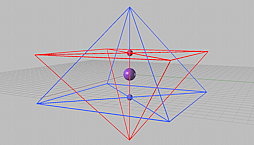
It is written that the father of American composer Charles Ives, who was a big influence on his son, once encouraged him to listen to the sound of bands moving simultaneously over a field but playing different tunes. He pointed out how the music faded in and out quite naturally but also how the incoherence of the conflicting pieces contained a certain beauty. Ives thus became aware how contradictions in sound can actually lead to new discoveries. Basically Ives father foretold how far music would move in the 20 century.
Tesseract is a comparable experiment in serendipity and might be the strangest specimen that ever escaped from my laboratory. On the surface it's simply a piece in the typical late ‘70 / early 80ties electronic style made famous by acts like Tangerine Dream, Klaus Schulze, Vangelis, Jean michel Jarre, et all. The sort of stuff some people, me included, can never get enough off. Vangelis' “Soil Festivities” and “Ma Dolce Vita” by Baffo Banfi where particular inspirations.
Under that surface this piece is however a rather strange mix between reduction and minimalism on one side and complexity and poly-rythmic experimentation on the other.
Only 2 instruments where used, the Yamaha CS70M and SK50D, both of them very underrated. The CS70M mostly because it is overshadowed by its forbearer, the CS80. The SK50D in turn tried to be too much at once, never really excelling at anything. It almost seems to be too bland in it's Japanese perfection. Until you put some good effects processors on it that is!
I one day sat down to record some live sessions, accompanied by a video recorder to possibly use the results as You Tube material. This led to 2 takes, recorded on separate evenings. Nothing really spectacular. I noodled around on the CS70M until I found something interesting to fill its polyphonic sequencer and then put that in a loop. You can actually hear me search for the idea's! As soon as such a sequence had been established further improvisations where layered on top of it, still in one go. Simple enough!
After the sessions stranger powers however manifested themselves. I had recorded both takes on multiple channels/ tracks of my Roland VS 2480 harddisk recorder but within a single project file. I did however NOT listen to the first take while recording the second one!
Only afterwards did I put both session on top of each other. Just for fun. The result was strangely fascinating, as the listener will hopefully agree on. It almost seemed like I had been listening to some internal, semi-conscious guidelines in spite of the original temporal distance between the recordings.
So far so good. Those sessions took place in late 2016 but I have never worked so long and arduously on a projects mixing stage! The most difficult questions to answer where in how far I should allow myself to remove mistakes or correct timing discrepancies. In other words: Where to leave that strange serendipity fully intact and where to polish things a bit. No additional material was however recorded. Everything you hear still comes from those 2 original live sessions and the most important corrections are based on slightly shifting material in time!
About the title: A Tesseract is a visual representation of mathematical thinking about 4 dimensional objects. Normally this is symbolized by a cube within a bigger one. My version (see above) is my own artistic interpretation of that general idea. Please let me know if anybody ever sees some scientific or mathematical merit in all of this so that I can claim that I knew that right from the start! Until that time it's just another playful fancy. Just like the music itself.

This is my first foray into using the Janko keyboard adaptors I built. These have now become an integral element of my Starship One setup. Although they will basically fit on almost any standard keyboard they perfectly supplement the timbral and tonal freedom the Starship One gives me.
On a Janko type keyboard every scale can be played with equal ease. Thus the relation between all existing scales becomes more equal and open. It enables me to improvise and compose music that has the freedom of 12-tone music but without it´s later serial constraints. It thus brings me as close to total harmonic freedom as I want or dare to go.
In short: I am getting very near to reaching an ideal which I have been after for my whole musical life, namely to get to an optimal integration of both the instinctive and analytical aspects of my creativity. I hope that the listener can agree that this music is very expressive and thus defies the cliché of electronic music being impersonal and rigid.
1.
2.
3.
4.
5.
6.
Possibilities
Solo For Starship
Can I Call You About Those Blue Sands?
Theme From A Dream
Fireflies
Wailing
10:23
5:53
5:18
4:10
2:36
11:04
total time: 39:24
Most sounds where produced on the Technics WSA1 synthesis engine, the only exceptions being the guitar sound in "Possibilities" (Korg Prophecy), the panning noisy wooshes in "Solo For Starships" and "Can I Call You ..." (GEM S3) and the pink noise percussion in "Theme From a Dream" (JEN SX 1000).
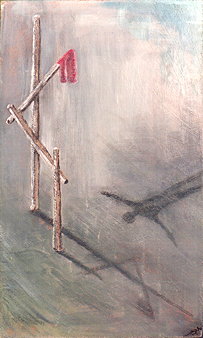
This piece is inspired by the struggle of freedom within the communist system of the USSR, where dissident authors were cut off from any means of publication and therefore had to revert to spreading their writings themselves. This sort of underground literature was called Zamisdat.
Those who got caught where interrogated, tortured and executed or if they where "lucky" sent to work camps in Siberia, called Gulags, The climate was hard, the winters where severe and the regime in the camps extremely harsh. Escape was either trough death or by reinstatement in the system, which for instance happened to scientists and engineers when the second World War, called the Great Patriotic War in the USSR, made their knowledge appreciated again.
For a mere writer, a trader in idea's and ethic principles, such a relief was however rarely forthcoming. They only had one thing left: The hope for a new spring, a better future in which the system would collapse or at least become sane enough to acquire some form of justice. For only hope springs eternal.
So on the surface this piece is rather programmatic in its sometimes literal treatment of the subject (Hear and thus feel that cold Siberian wind howling!) but one should not underestimate the wider message: Every system can be perverted and thus inevitably is. It is the reason why socialism and democracy, principles that are in essence very positive, became so corrupted. In reality empires are always broken down from within because there is no limit to mans individual greed and lust for power and the decadence that leads to.
So never assume that this is only a single perspective tale from the past. Socialist or capitalist. Nothing will change as long as humanity does not grow up.
Also see the 20 Elements of Benign Materialism section.
Except the poly aftertouch synthbrass parts in "Zamisdat" and "Gulag Apocalypse", which where programmed and played on the GEM S3, and the bass drones in "Gulag Apocalypse", which where played on a Roland SH 2000 monophonic synthesizer, processed through the Eventide Modfactor effects processor, all other tracks, say 95 % of the total piece, where programmed and played exclusively on the Technics WSA synthesis engine.
Not bad for a synthesizer which bombed commercially and has since been as good as forgotten, eh?
Also see the Starship One Project description on the INSTRUMENTS page and the downloadable articles on the WRITING page.
Siberia, part 2 of this suite, has been reworked from about 4:30 min to 11:00 min. I actually considered this track to be a personal compositional breakthrough from the start but was still not satisfied with its structure. That is why I still decided to refine it further. The actual changes are minimal but the natural flow of the piece has been markedly improved. Enjoy!
1.
2.
3.
4.
Zamisdat
Siberia
Gulag Apocalypse
Hope Springs
5:42
12:47
7:44
6:15
total time: 32:28
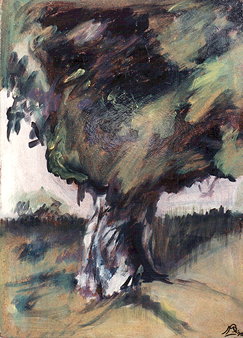
| Balance | |
This 37 minute piece exists of 5 separate sections. I have intentionally not divided it into individual files. The CD gave us the ability to reproduce long pieces but nowadays audio data management solutions chop everything up again. I hate that. All rhythms, basses, chirps and arpeggio's: Son OF GX Melodic lines: Yamaha CS80 The basic structure was performed on the Son Of GX as a single real time improvisation in which I reacted to the audio environment recording. Not bad for an organ, eh? By the way: The froggy echo's where produced by the Eventide Modfactor. II - River All melodic parts: GEM Promega 3 The piano was layered with aftertouch controlled brass 'memorizing' the played notes. This is only one preset played in real time. III - Crowd Sequencer-like rhythm: DKI Synergy Wavetable synth sounds: Waldorf Microwave XT Guitar solo: Korg Z1 Rhythm loops: Assorted hand percussion The basic pattern might sound like it has been programmed into a sequencer but it is actually produced with the aid of the Synergy's remarkable envelope generation capabilities. The Eventide Mod Factor added the stereo panning. IV - Insight Basic structure (chords, arpeggio´s, bass and drumbox): Son Of GX Synth solo's and sound effects: Yamaha CS80 Woodwind melodies: Korg Z1 The basic structure was again performed in real time and then edited into its present form. V - Waiting For The Renaissance All harmonic parts: Yamaha E70. Sound Effects: GEM Promega 3 The harmonic part is a one take, non edited improvisation performed on my first E70. Later this was converted into the “Son Of GX” but these are all still only original E70 preset sounds. | |
1.
2.
3.
4.
5.
Water
River
Crowd
Insight
Waiting For the Renaissance
0:00 min to
8:46 min to
14:47 min to
23:29 min to
32:08 min to
8:45 min
14:46 min
23:28 min
32:07 min
36:59 min

We live in Postmodern times which make me very nostalgic about the Modernist era, when people still believed in the future. Their dreams often where very naive and humanity hardly made less mistakes then in previous ages (WW2, the cold war, etc.) but still I long back to times when people thought almost everything is possible and behaved accordingly. At least in the Western World our cynic postmodern stance speaks of lost opportunities and denied responsibilities.
In a very loose sense this theme forms the underlying concept tying this music together.
Musically this is much more complex and free in form as "Voyages". One step further might take my music into overly elitist territory but I´d rather stay a bit more accessible then that. I hope you´ll find I have succeeded in finding the right balance.
To relive a good old e-music tradition I include a listing of the major instruments used on the different tracks below. You will find more information about my instruments elsewhere on this site.
One very important "musical instrument" should however be specially mentioned: The (Roland VS2480) digital multitracker used to record everything. More then ever improvisation lies at the heart of my music. Modern digital multitracking and editing makes it possible to use spontaneous creativity as the basis for refined compositions. For me that leads to a perfect mix of left and right brain hemisphere processes, the heart and the mind, Jin and Jang.
| 1 - Long Live Technology | |
|
Bass drum doubling and effect swooshes: Technics WSA1 Everything else: SGX V1 While making this it reminded me very much of J.M. Jarre´s first 3 albums but also of the Elka Synthex, which he used a bit later. The E70 sometimes seems to come very close to it in it's SGX from. Digital oscillators, eh? | |
| 2 - Schwebebahn | |
|
Intro and all chord stuff: SGX V1 Solo in last part: CS80 Sequence: JEN SX 1000 Rhythm tracks: sounds of real Schwebebahn monorail in the German town Wuppertal (including the yelps!) No "conventional" sampling, looping or playing as such but pure audio editing. Quotes by Naum Garbo (1890 – 1977) and Robert Hughes (1938 – 2012) from: The Powers That Be, part 2 of the 1979 BBC series: The shock Of The New. For copyright reasons I will not disclose the source of the big bashing sample. You'd never guess it anyway. Let's say that I never had any qualms with using samples that are not recognizable, although I normally hardly ever do. Another example is the stumbling minimalist rhythm in Ravel Noble (See: Experimental Dance Pieces). | |
| 3 - The Ghost Of War | |
|
Orchestral Percussion: Roland MOC-1 module All other tracks: GSX V1. Again the whole rhythm stuff has been built out of edited audio recordings, this time taken from the original chord and solo improvisations (Can you spot them?). | |
| 5 - Frostline | |
|
All tracks: Polycheesy GX-800 (customized Yamaha CSY1 organ with fully programmable solosynth +fully integrated Korg Poly 800 poly section)
The solo trumpet (customized Yamaha solo synth) and the strings (Poly 800) where improvised and recorded in one pass. The other parts where added as overdubs (spacy didgeridoo, bass and brass: Solo synth. Bleeps and brass: Poly). | |
| 6 - Mediterranean | |
|
All tracks: standard Yamaha E70.
This actual version was recorded on separate takes / tracks but basically one could play this whole piece live on a bog standard E70. In this case a Vangelis connection can of course hardly be denied, although it is not really like any of his existing stuff. More the sort of track he could have come up with if he bought an E70. | |
| 7 - Kalkar | |
|
Solo's and digital pads: Korg Z1 Analog synths: Yamaha CS70M Electronic percussion: Roland W30 Hand percussion (also featuring Raphael and Merlijn): thunder spring, toy accordion, referee whistle Piano: Yamaha P80 Harpsichord: Yamaha TX-1P piano module
This tracks is further developed version of the original that I performed live in the cooling tower of former fast breeder nuclear reactor facility Kalkar in Germany. Part of the performance was a free improvisation on some percussion items while moving through the actual space. A recording of that part can be heard in the middle section. Listen to the amazing echo´s! Thanks to my sons Raphael and Merlijn for contributing. | |
| 8 - Neocolonial | |
|
Analog synths and ring mod effects: Yamaha CS80 Pulse-rhythm and intro theme: Jen SX 1000 Digital flutes and woodwinds: Korg Z1 Percussion: Wersi CX5 Drumcomposer The basic improvisation was recorded in one take on the CS80. Strangely enough the rhythm track was added later but somehow still fitted perfectly into its natural timing. | |
| 9 - See As I See | |
|
Sliding Duduky lines: Starship One / WSA-1. Portamento bass layer: CS80 All other tracks: Polycheesy 800, so expanded Yamaha CSY1 plus Korg Poly 800. Be aware that all melodic / solo lines except the Duduky stuff where actually played on the CSY's organ stops, the envelopes being added by tweaking the sliders in real time. Not yer typical organ grinder stuff, eh? The sequence is from the Korg Poly 800. The constant retriggering of the single filter by the rhythm is part of the overall effect. An example of intentionally using the ¨dreaded¨ paraphonic effect. | |
| 10 - Arrested Development | |
|
vocal sample background rhythm: novelty toy sampling keyfob. The sequence type stuff and the stringy mayhem towards the end: WSA-1 All other tracks: Polycheesy 800, so expanded Yamaha CSY1 solo synth and Korg Poly 800). | |
The list below puts all the tracks in this project into a more or less historically chronological order as far as the inspirations for the titles are concerned:
1.
Long Live Technology
(Intro and overall theme)
7:36
2.
Schwebebahn
(Late 19th century and early 20th century)
8:57 3.
The Ghost Of War
(WW1, WW2, etc.) 5:31 4.
Atomium
(The almost naive belief in technology after WW2) * 5.
Frostline
(The Cold War) 7:21 6.
Mediterranean
(All Mediterranean rumblings after WW2 in Greece, Turkey, Cyprus, Israel, Lebanon, Libya, Syria, etc.) 5:35 7.
Kalkar
(The decline of the belief in technology) 11:21 8.
Neocolonial
(Oil wars and such) 7:13 9.
See As I See
(... No, they don't!)
7:59 10.
Arrested Development
(= Today!)
6:08
total time: 67:41
* still to be released
It´s just a suggestion though. The advantage of such a general concept is that the order of the tracks is not binding. So please make up your own "mix" if you feel like it.

In Rome there is a square, the Campidoglio. On this square there stands an equestrian statue. It depicts the Roman Emperor Marcus Aurelius on horseback.
Nope, it's no the original anymore. The ages and modern air pollution have done their worst and thus the original went into the Museo Capitolini in 1981.
I do not know if dutch artist Arthur Spronken, a famous sculptor of horses from Limburg, the same region of the Netherlands where I come from, was actually the first to come up with the idea to exchange the statue with a replica but he certainly started work on his own interpretation of it with the intention to give the end result away as a Dutch gift to the Italian state.
Thus the first work was undertaken, a bighead filled foundation was established, even Dutch queen Beatrix came to visit the artist studio to watch the progress.
A documentary film was also made.
I got wind of the idea and, being young and intrepid, asked if there might be interest in a special electronic soundtrack for the documentary. There was and thus I did my thing!
I was even granted an audience with the artist himself! He actually seemed rather impressed by my music but still decided to treat me like some upstart. Maybe he was actually too impressed? Artists and their frail ego's, eh? Tell me about it! I also never met the Queen, by the way.
So, yes I once actually made a soundtrack but guess what, that new version of the documentary was never officially released. I once got paid a few bob for expenses and that was it.
The whole project actually ground to a halt. Never would the Italian's accept a foreigner to do this sort of work, not even for free. So a competing all Italian project was started and another, not too well received, copy of the statue is now indeed standing on the square.
Ah, me and my famous luck!
The subject was exciting though and I think the music has stood the test of time rather well. The biggest pity is that the way that the whole project went out like a candle kept me from composing more music for it. So a core of about 15 minutes is all that is left.
I have however often thought about returning to the subject in a broader sense. A rather interesting musical theme I then devised actually still sits in my head. The fact that it I can still remember it after all these years must be proof that it is a rather good one.
1.
2.
3.
4.
5.
6.
7.
8.
9.
Equis Romanum +
Fall Of The Empire
Legacy +
Horses In the Snow
Consulatio
Tracing For Shapes +
Casting Of(f) The Shell
Horses In the Snow (reprise)
Fall Of The Empire (stoic mix)
3:39
1:29
2:10
3:51
1:47
2:44
total time: 15:40
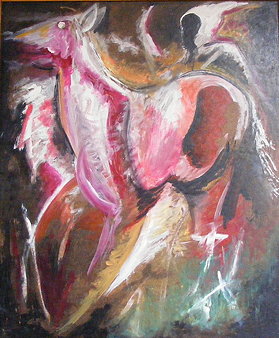
Although the pieces in this section where not specifically composed as dance music and have never been performed as such they are, in spite of the big distance between the years in which they where composed / recorded, similar in spirit, being rather experimental, minimalistic and rhythmic, three factors that would make them usable for contemporary dance and ballet.
Ravel Noble
1.
2.
3.
Ravel / Noble
Ravel Noble (Till´s Trance mix)
Fête De La Fatalité
(2012)
(2012)
(1989)
14:45
14:48
13:06
total time: 42:39
Talking about the Ghost In the Machine: This can happen when your CD-player starts to play tricks on you. Maurice Ravel´s Valses Nobles Et Sentimentales led to a perfect minimal music backing track with inbuilt variations, requiring only minimal editing. The melodic backbone is built on improvisations sang into one of the greatest creative tools of recent times: The TC Helicon Voicesynth. 30 years ago I already dreamt of such a thing. It has now at last become reality.
This is a rather experimental piece, residing somewhere between musique concrete and minimalism. It more or less grew out of inspiration gained from a project I recorded for somebody else, although it has it's own very unique character. The narrated text is rather vague but seems to already discuss what would become a very central theme in my output: Where to go with one's creativity in a totally indifferent environment?
I actually more or less saw this as music for a ballet piece and thus sent a demo to a then rather well know Belgian experimental dance "dame". Never heard anything about it. Not even a polite "no thank you". That's what you get when you're not in with the incrowd I guess. Another theme was already developing indeed.
A small echo of the later Inferno project already seems to be present in the text and one can even find the first traces of the sort of thoughts that would lead to my 20 Elements of Benign Materialism.
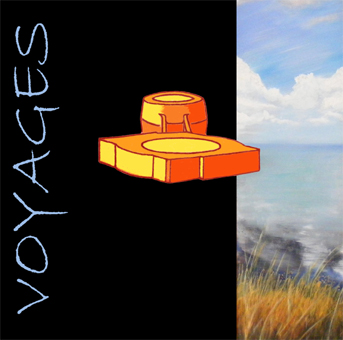
"Voyages" is a musical description of a virtual trip around the world. You could actually take a map and follow the journey. I have always found it a miracle nobody else came up with a similar adaption of this simple idea. Off course other people have written music about foreign places and traveling but somehow nobody seems to have converted the basic idea into such a logical form.
This is one of my earliest projects. I recorded in the middle 80ties. So you could say it´s from the end of the period in which electronic music found it´s biggest popular acclaim. In it´s romantic, neoclassical innocence the music is firmly connected to my own native, middle European cultural roots but it also stands for my own journey into a bigger, more diversified world.
Saving this stuff from extinction by copying it from analog tape, editing and remixing it has been a very satisfying experience.
At the moment the download represents a truthful reconstruction of the original 8-track recordings, including flaky acoustic piano imitations and out of tune synths. The next step could be to update this material by keeping what is right and only change things if they truly add to the end result. Furthermore new compositions could be included. That would really turn it into a round the world trip.
1.
2.
3.
4.
5.
6.
7.
8.
9.
10.
11.
Setting Out
Burgundy
El Escoreal or The Dreams Of A Lonely King
Al-Andaluz
Sailing The Desert
Kilimanjaro
Indic Crossing
Eastern Atmospheres
Garden Of my Life
The restless Heart
Terminus
4:20
2:58
2:40
2:00
2:59
4:16
4:23
4:00
4:45
3:16
1:52
total time: 37:29
The miracle of WAVclean
In the reconstruction of “Voyages” one single tool proved to be a godsend. When I started recording ages ago noise was noise (just like pitch was pitch for that matter). Once a recording contained noise you where stuck with it. Only EQ was available to lessen the impact a bit but that always also affected the frequency content of the intended part of the recording. Nowadays software can however actually denoise recordings!
I would like to thank Kiyotsugu Arai, developer of the Excla WAVclean 1.9.3 software for making this excellent tool available to me. I used it to clean up the most critical parts (typically in the quieter solo sections). Without WAVclean such recordings would simply have to be replaced. With WAVclean I was able to safe all original performances. The result is an honest and true reconstruction of the original.
Let me give an example of the extraordinary power of WAVclean: In “Sailing the Desert” and “Terminus” I used recordings of an acoustic upright piano. These where made with cheap microphones on an average 80ties audio cassette recorder and then transferred to a ¼ inch 8 track Fostex A8 recorder. In the old days the noise in such recordings could only be made inaudible by rigorous EQing and / or masking them with louder overdubs. Now such tracks can be converted to something very close to the original acoustic experiences. Off course the coloration from the original recording process remains but no audible noise is to be heard on the processed files, even if the tracks are monitored in isolation! And one has also to keep in mind that an acoustic piano is an extra complex sound to treat. Few audible artifacts can be heard after processing and these can almost totally be removed by simple EQ-ing.
Even in its 1.9.3 version WAVclean is a miracle that I cannot recommend highly enough. Thank you Kiyo!
A more advanced version 2 of Wavclean is available through the internet, though it can presently only be ordered online via a purely Japanese site:
www.excla.jp
One can however contact the company in English via:
support@excla.jp